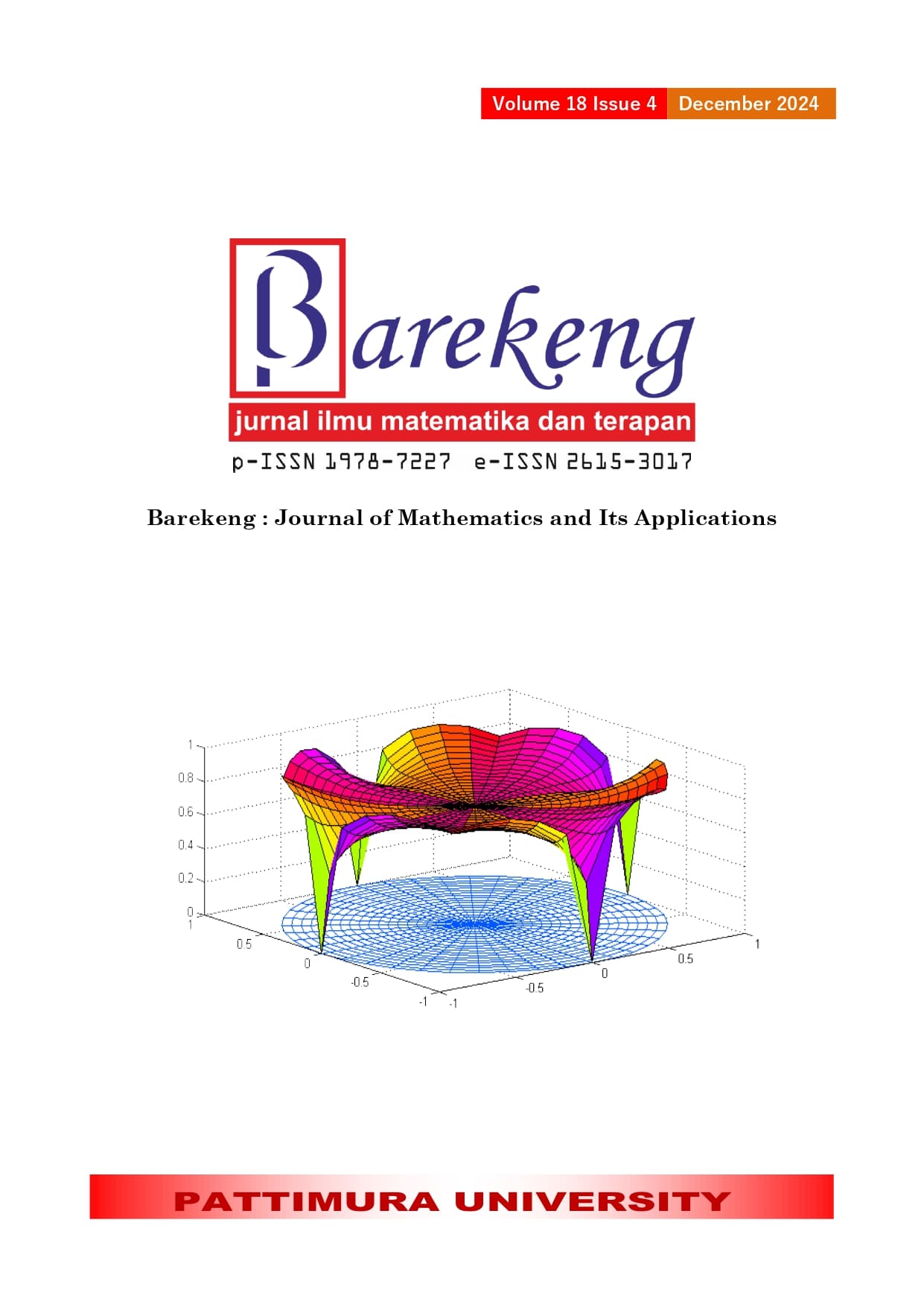SIMILARITY CHECKING OF CCTV IMAGES USING PEARSON CORRELATION: IMPLEMENTATION WITH PYTHON
Abstract
Video surveillance technology, such as CCTV, is increasingly common in various applications, including public safety and business surveillance. Analyzing and comparing images from CCTV systems is essential for ensuring safety and security. This research implements the Pearson Correlation method in Python to measure the similarity of CCTV images. Pearson Correlation, which assesses the linear relationship between two variables, is employed to compare the pixel values of two images, resulting in a coefficient that indicates the degree of similarity. We used a quantitative approach with experiments on two scenarios to test the program's effectiveness in measuring image similarity. The results demonstrate that Pearson Correlation is highly effective in distinguishing between identical and other images, providing a more accurate and comprehensive assessment of image similarity compared to histogram analysis. However, the findings are constrained by the specific scenarios and dataset utilized. Further research with more diverse empirical data is required to generalize these results across a broader range of CCTV conditions.
Downloads
References
P. Vennam, P. T. C., T. B. M., Y.-G. Kim, and P. B. N., “Attacks and Preventive Measures on Video Surveillance Systems: A Review,” Applied Sciences, 2021, doi: 10.3390/APP11125571.
S. S. Priya and R. Minu, “Abnormal Activity Detection Techniques in Intelligent Video Surveillance: A Survey,” 2023 7th International Conference on Trends in Electronics and Informatics (ICOEI), pp. 1608–1613, 2023, doi: 10.1109/ICOEI56765.2023.10125671.
J.-Y. Kim and H. Kim, “A Study on the Application Model of AI Convergence Services Using CCTV Video for the Advancement of Retail Marketing,” Journal of Digital Convergence, vol. 19, pp. 197–205, 2021, doi: 10.14400/JDC.2021.19.5.197.
S. Arora, K. Bhatia, and V. Amit, “Storage optimization of video surveillance from CCTV camera,” 2016 2nd International Conference on Next Generation Computing Technologies (NGCT), pp. 710–713, 2016, doi: 10.1109/NGCT.2016.7877503.
P. Schober, C. Boer, and L. Schwarte, “Correlation Coefficients: Appropriate Use and Interpretation,” Anesth Analg, vol. 126, pp. 1763–1768, 2018, doi: 10.1213/ANE.0000000000002864.
J. D. de Winter, S. Gosling, and J. Potter, “Comparing the Pearson and Spearman correlation coefficients across distributions and sample sizes: A tutorial using simulations and empirical data.,” Psychol Methods, vol. 21 3, pp. 273–90, 2016, doi: 10.1037/met0000079.
M. F. E. Md. Senan, S. Abdullah, W. M. Kharudin, and N. A. M. Saupi, “CCTV quality assessment for forensics facial recognition analysis,” 2017 7th International Conference on Cloud Computing, Data Science & Engineering - Confluence, pp. 649–655, 2017, doi: 10.1109/CONFLUENCE.2017.7943232.
P. Pramkeaw, P. Ngamrungsiri, and M. Ketcham, “CCTV Face Detection Criminals and Tracking System Using Data Analysis Algorithm,” Advances in Intelligent Systems and Computing, 2017, doi: 10.1007/978-3-319-94703-7_10.
K. Maksymowicz, A. Kuzan, Ł. Szleszkowski, and W. Tunikowski, “Anthropological Comparative Analysis of CCTV Footage in a 3D Virtual Environment,” Applied Sciences, 2023, doi: 10.3390/app132111879.
J. Liu, Y. Zhang, and Q. Zhao, “Video stabilization algorithm based on Pearson correlation coefficient,” 2019 International Conference on Advanced Mechatronic Systems (ICAMechS), pp. 289–293, 2019, doi: 10.1109/ICAMechS.2019.8861649.
F. F. Birgani and D. Fatehi, “Measurement of the correlation coefficients between extracted features from CT-scan and MRI images,” Journal of Shahrekord University of Medical Sciences, vol. 20, pp. 87–99, 2018.
M. Mileva and A. Burton, “Face search in CCTV surveillance,” Cogn Res Princ Implic, vol. 4, 2019, doi: 10.1186/s41235-019-0193-0.
K. Ritchie, D. White, R. Kramer, E. Noyes, R. Jenkins, and A. Burton, “Enhancing CCTV: Averages improve face identification from poor-quality images,” Appl Cogn Psychol, 2018, doi: 10.1002/ACP.3449.
R. T. H. Hasan and A. B. Sallow, “Face Detection and Recognition Using OpenCV,” Journal of Soft Computing and Data Mining, 2021, doi: 10.30880/jscdm.2021.02.02.008.
T. J. Sargent and J. Stachurski, “SciPy,” Learning Scientific Programming with Python, 2020, doi: 10.1017/9781108778039.009.
R. Gulve et al., “39 000-Subexposures/s Dual-ADC CMOS Image Sensor With Dual-Tap Coded-Exposure Pixels for Single-Shot HDR and 3-D Computational Imaging,” IEEE J Solid-State Circuits, vol. 58, pp. 3150–3163, 2023, doi: 10.1109/JSSC.2023.3275271.
H. Shan, L. Feng, Y. Zhang, and Z. Zhu, “An Interpretable Pixel Intensity Reconstruction Model for Asynchronous Event Camera,” 2023 IEEE 5th International Conference on Artificial Intelligence Circuits and Systems (AICAS), pp. 1–4, 2023, doi: 10.1109/AICAS57966.2023.10168635.
Z. N. Khudhair et al., “Color to Grayscale Image Conversion Based on Singular Value Decomposition,” IEEE Access, vol. 11, pp. 54629–54638, 2023, doi: 10.1109/ACCESS.2023.3279734.
Z. Wu and J. Robinson, “Edge-preserving colour-to-greyscale conversion,” IET Image Process., vol. 8, pp. 252–260, 2014, doi: 10.1049/iet-ipr.2013.0348.
J. D. de Winter, S. Gosling, and J. Potter, “Comparing the Pearson and Spearman correlation coefficients across distributions and sample sizes: A tutorial using simulations and empirical data.,” Psychol Methods, vol. 21 3, pp. 273–90, 2016, doi: 10.1037/met0000079.
T. J. Cleophas and A. H. Zwinderman, Modern Meta-Analysis: Review and Update of Methodologies, 1st ed. Springer, 2017. doi: https://doi.org/10.1007/978-3-319-55895-0.
Copyright (c) 2024 Angga Dwi Mulyanto, Bambang Widjanarko Otok, Hasri Wiji Aqsari, Sri Harini, Cindy Cahyaning Astuti

This work is licensed under a Creative Commons Attribution-ShareAlike 4.0 International License.
Authors who publish with this Journal agree to the following terms:
- Author retain copyright and grant the journal right of first publication with the work simultaneously licensed under a creative commons attribution license that allow others to share the work within an acknowledgement of the work’s authorship and initial publication of this journal.
- Authors are able to enter into separate, additional contractual arrangement for the non-exclusive distribution of the journal’s published version of the work (e.g. acknowledgement of its initial publication in this journal).
- Authors are permitted and encouraged to post their work online (e.g. in institutional repositories or on their websites) prior to and during the submission process, as it can lead to productive exchanges, as well as earlier and greater citation of published works.






1.gif)



